
The Bottom Line
Introduction & Drive Details
Patriot has updated its Viper branded SSD lineup with a new flagship offering. Over the past couple of years, we could have been assured of one thing when Patriot came out with a new flagship offering; it would have a Phison controller powering it. Not so this time around, as Patriot has chosen to partner with InnoGrit instead for their newest Viper gaming branded hyper-class SSD.
The 2TB Viper gaming VP4300 we have on the bench today has at its heart an InnoGrit IG5236 8-channel Gen4 x4 controller. The Viper VP4300 pairs InnoGrit's IG5236 controller with a Micron 96L TLC flash array. This is a hardware combination we've seen before when we reviewed the ADATA XPG S70 2TB back in January of this year.
This hardware mix proved to be a potent combination capable of delivering close to 7,500 MB/s throughput and still manages to find itself at or near the top of many of our benchmarks even to this day. With this in mind, we expect to see exceptionally good performance coming off the 2TB VP4300. Now, as we harken back to our first InnoGrit experience, we would be remiss not to mention what we did not care for regarding that experience. Heat. The S70 was definitely fast, but it ran HOT. Even with a massive heat sink, it still ran hot.
It seems that Innogrit has addressed the heat issue we had previously with a firmware update. We can report that our 2TB Viper VP4300 runs nice and cool. In fact, we ran all of our tests without even using either the included graphene thermal label or the beefy aluminum heat sink included with the drive. The VP4300 seems to run cool enough that it might even be a potential candidate for a Tiger Lake-based laptop upgrade.
Now let's dive in and put some numbers to Patriot's new flagship consumer SSD.
Drive Details
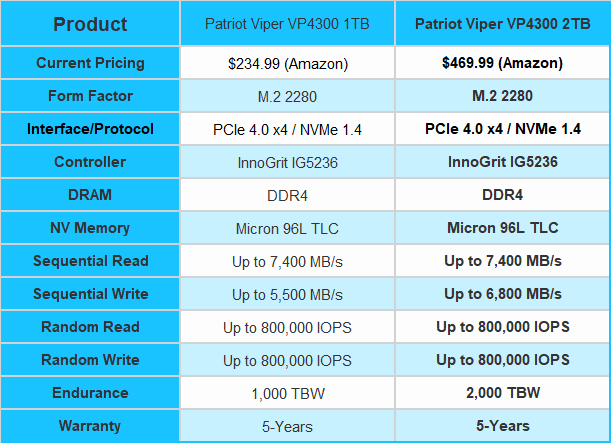
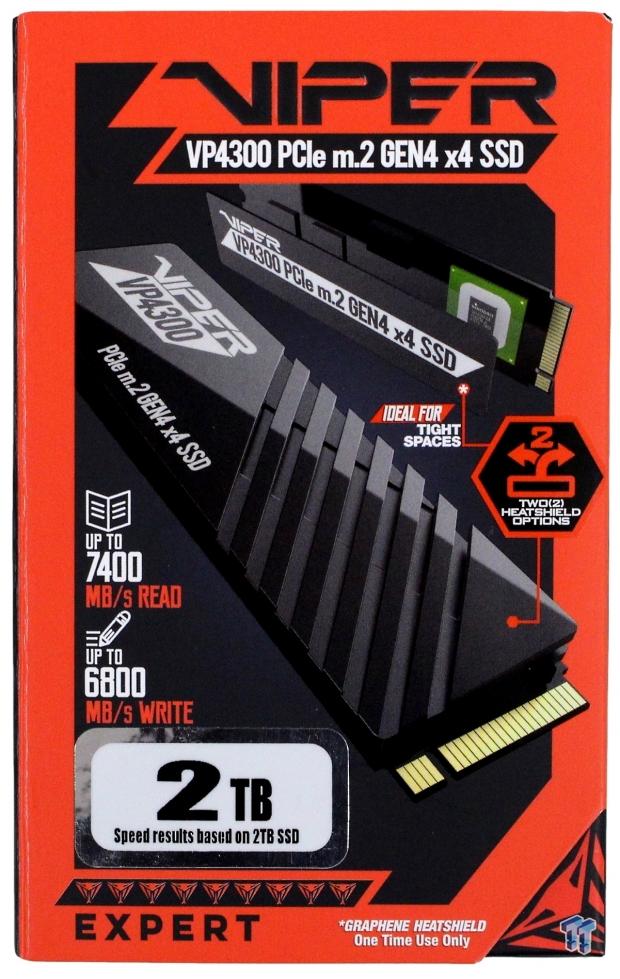
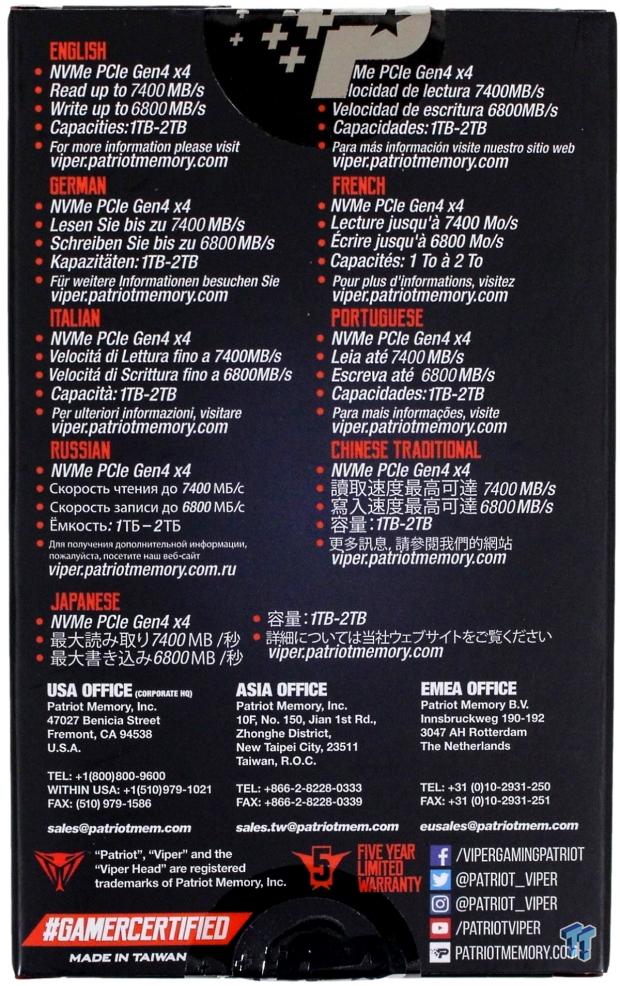
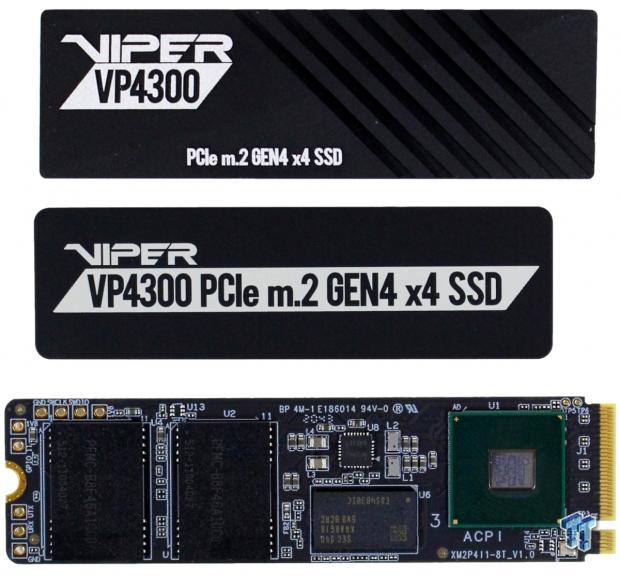

The VP4300 comes with thermal-related options. You can go naked, with graphene label, with aluminum heat sink, or stack the heat sink on top of the thermal label. As mentioned previously, we went naked for our testing and surprisingly did not encounter thermal issues.
Jon's Test System Specifications
- Motherboard: ASUS ROG Maximus Extreme Glacial - Buy from Amazon
- CPU: Intel Core i9-11900K - Buy from Amazon
- Cooler: Alphacool Eissturm Hurricane Copper 45 - Buy from Amazon
- RAM: Thermaltake TOUGHRAM XG RGB DDR4 4600MHz 16GB (8GB x 2) - Buy from Amazon
- Video Card: Zotac 2080Ti AMP Edition - Buy from Amazon
- Case: PrimoChill's Praxis Wetbench - Buy from Amazon
- Power Supply: Corsair AX1000 (buy from Amazon)
- OS: Microsoft Windows 10 Pro 64-bit (buy from Amazon)

Free SSD Software
Third Party Freeware
In the past, Patriot offered a PCIe SSD toolbox to complement their Viper branded SSDs. Not so this time around. The VP4100 does not come with any complementary software. Not a problem, really, because you can use the free tools below to basically accomplish what a typical SSD toolbox will do for you.
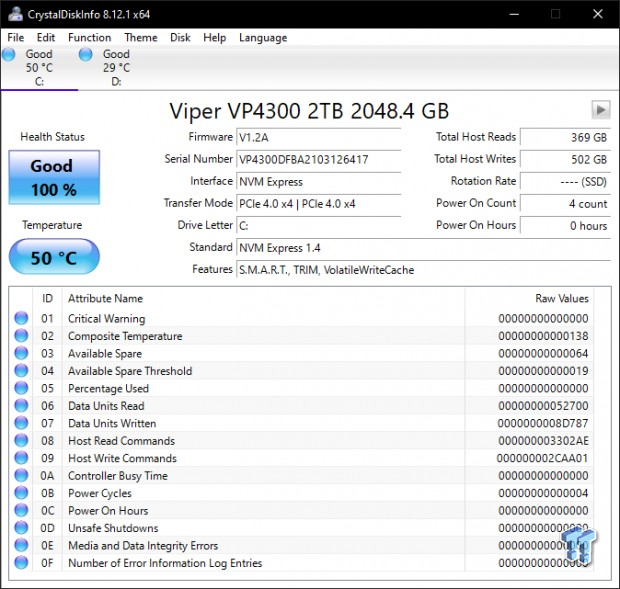
CrystalDiskInfo free monitoring software, download here.
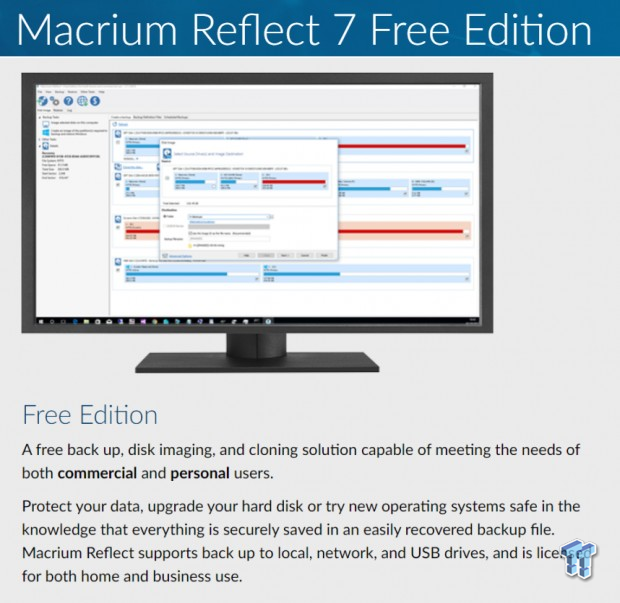
If you need to clone, there is freeware for that here.
Synthetic Benchmarks: CDM & Anvils
CrystalDiskMark
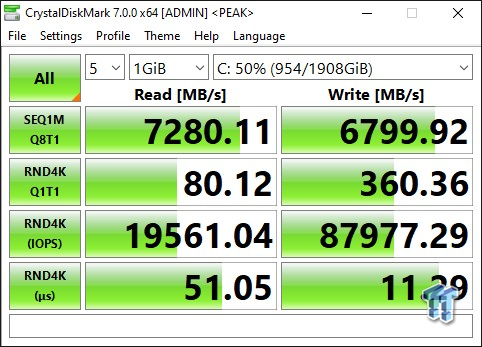
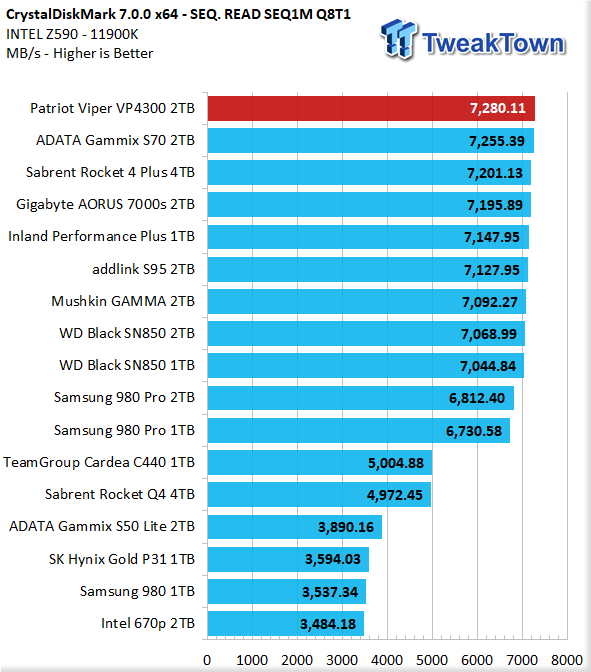
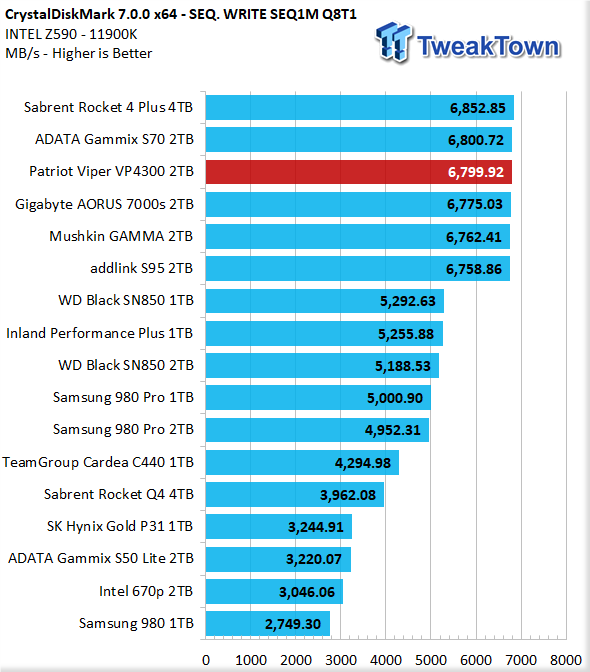
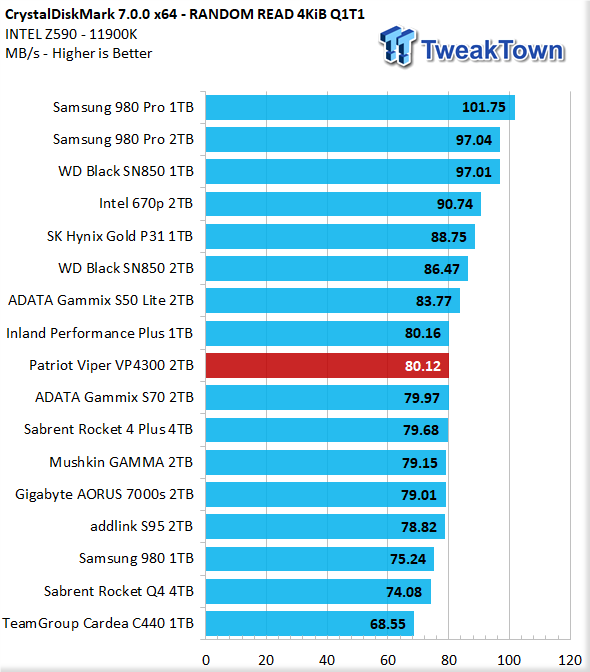
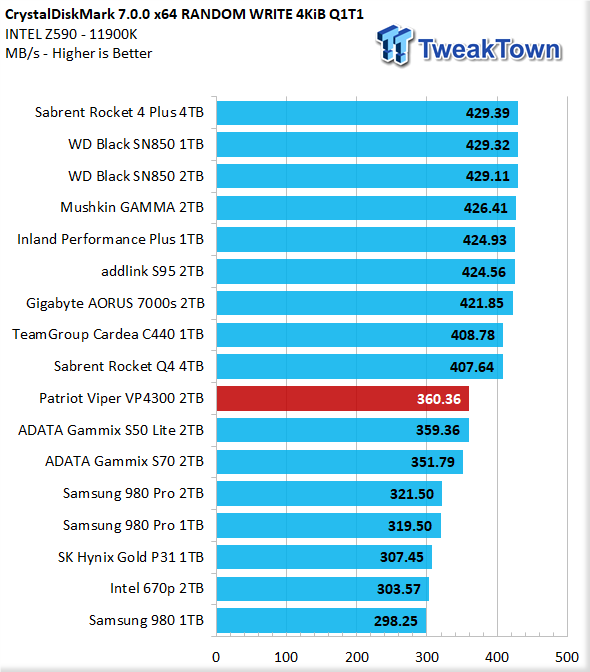
First benchmark out of the gate, and the 2TB Viper VP4300 treats us to a lab record for an Intel-based system. Impressive. If you notice, we are not hitting the stated sequential read speed of 7,400 MB/s. This is because although Intel produces overall superior performance, it tends to deliver slightly lower Gen4 sequential read speeds than AMD.
Anvil's Storage Utilities
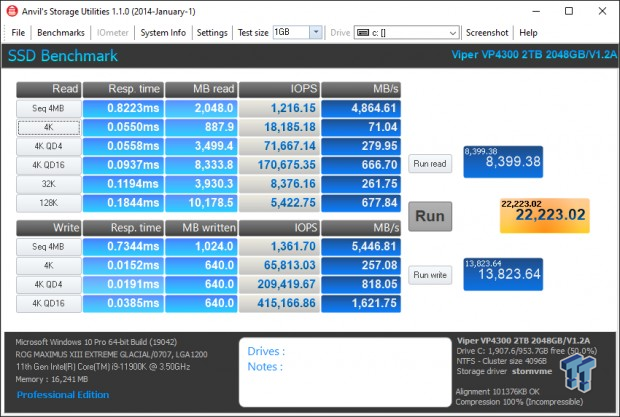
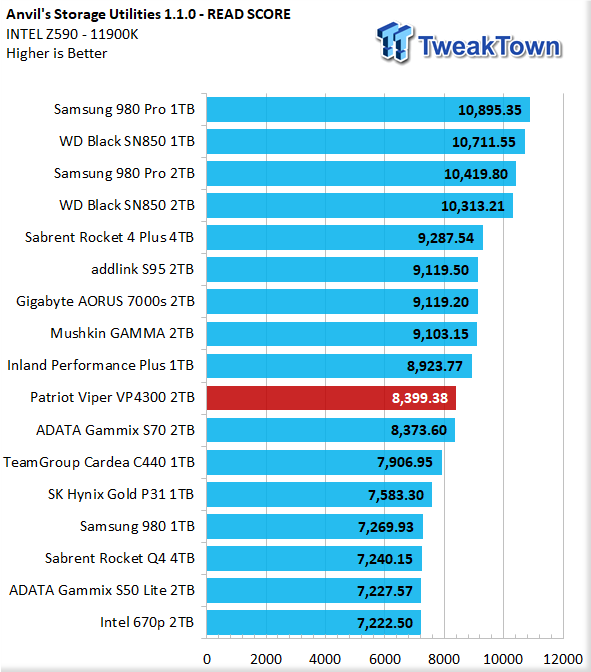
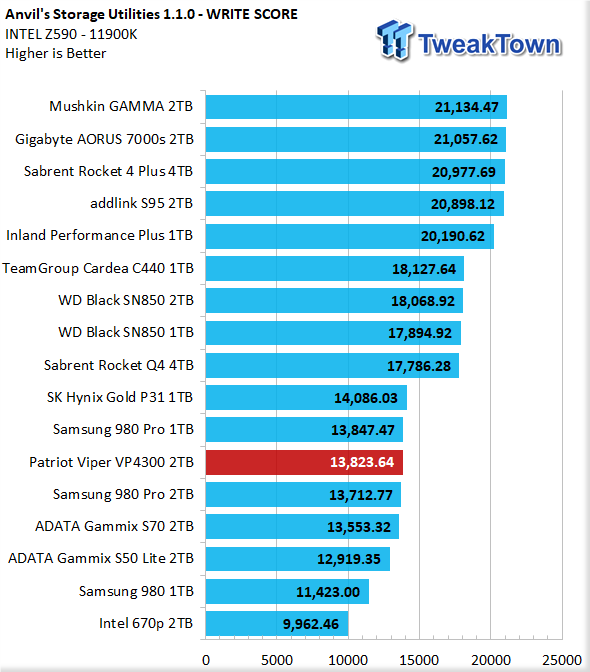
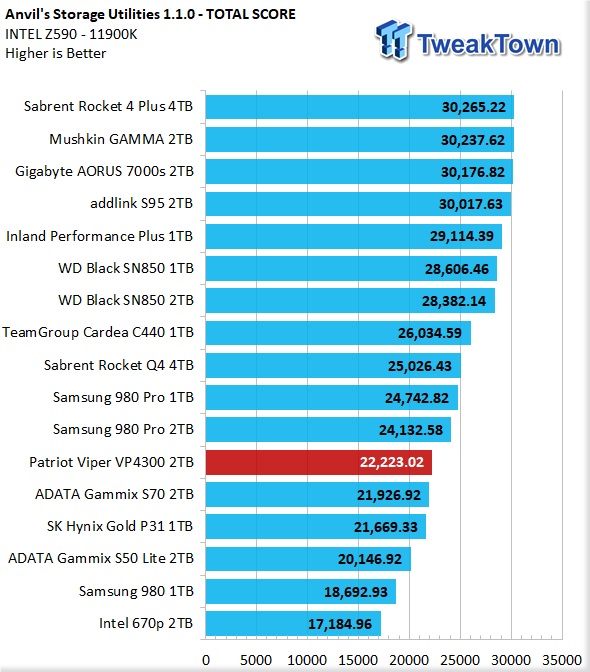
Like the S70, the VP4300 delivers great low queue depth numbers, but random performance fades off at higher queue depths resulting in scoring that belies its true colors.
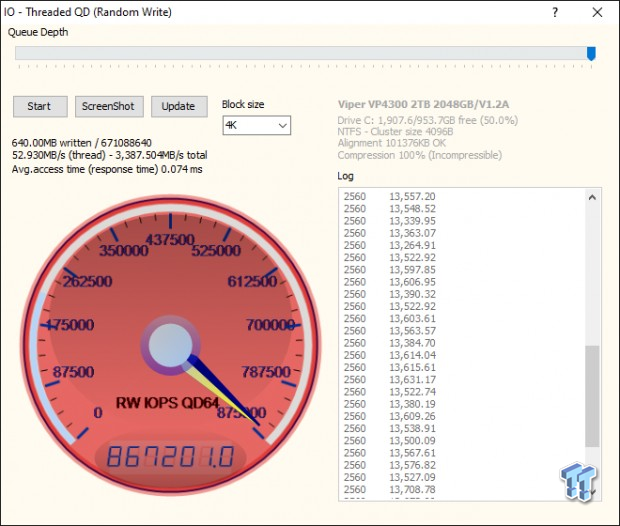
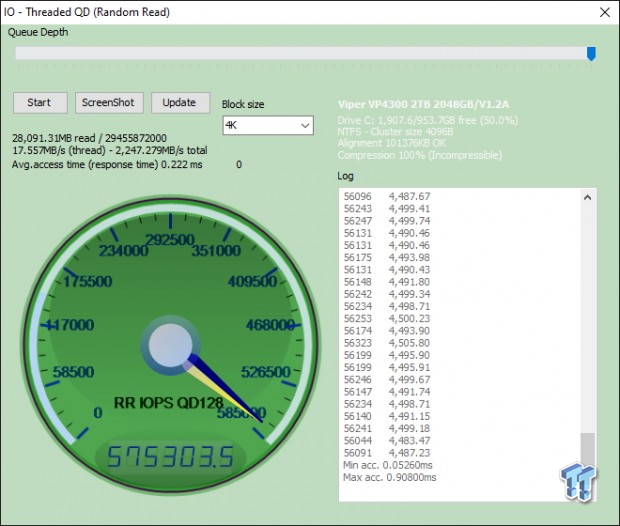
As we've seen all along from Micron 96L flash arrays, hitting stated max random read IOPS is a pipe dream as they are severely overstated. Stated max random write specs are generally exceeded, as is the case here.
Synthetic Benchmarks: AS SSD & ATTO
AS SSD
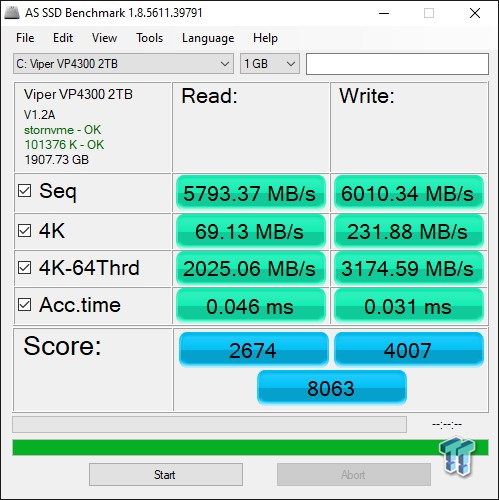
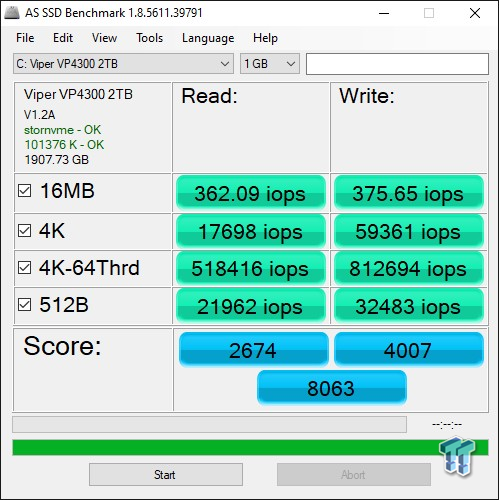
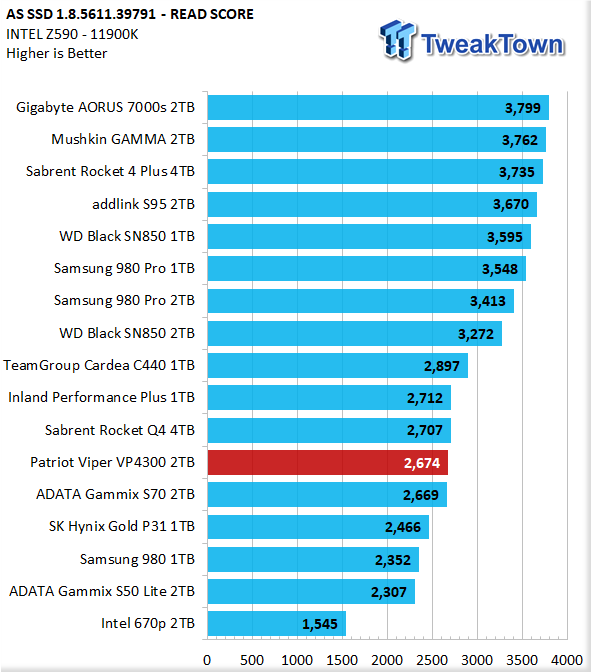
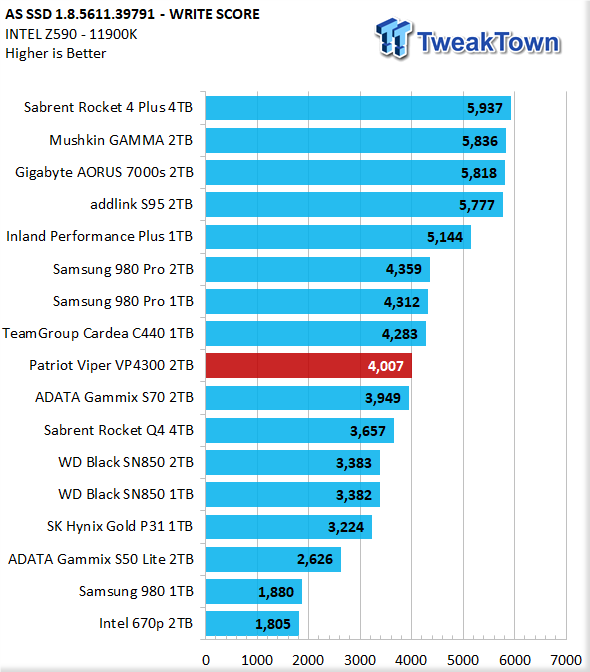
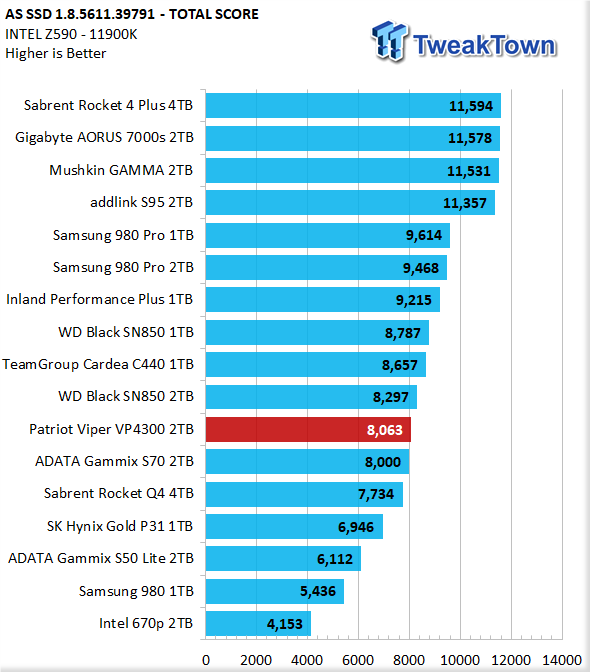
Relatively low performance at 64 threads again results in scoring that belies the drives real-world performance capabilities.
ATTO
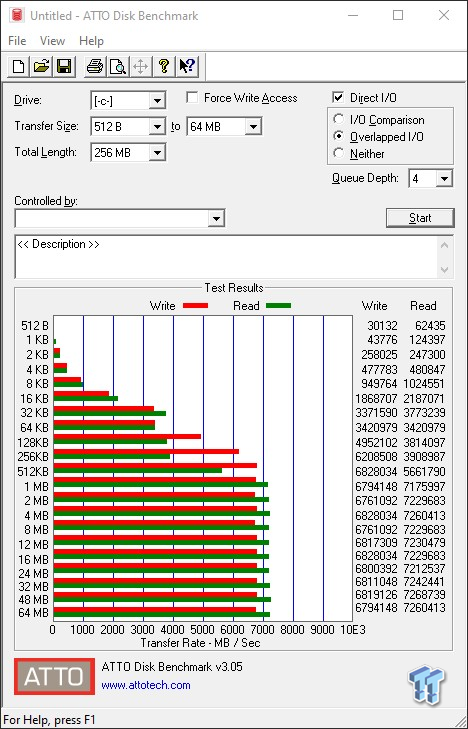
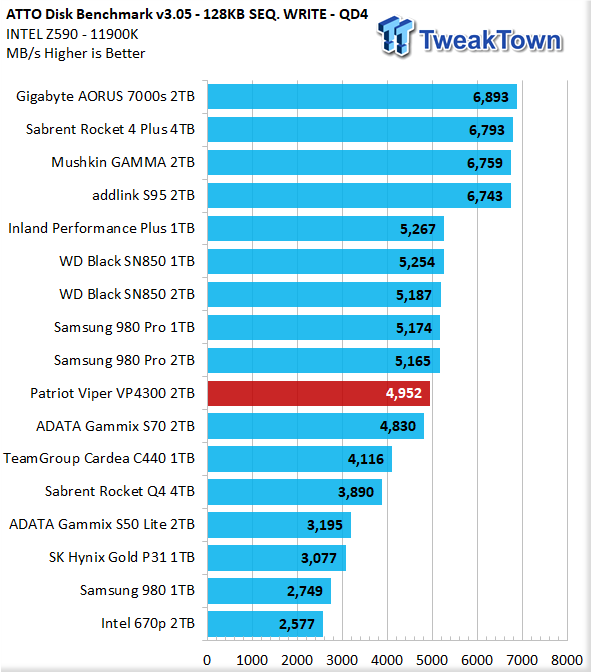
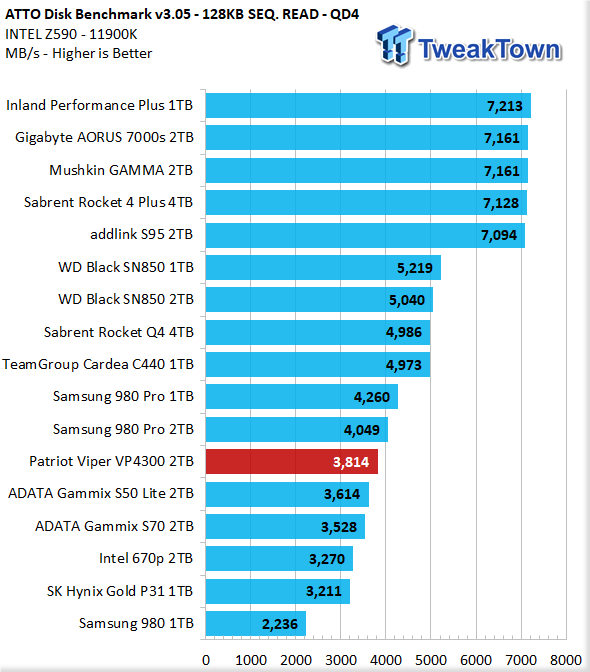
Although not charted, we are looking for 50 MB/s read/write at 512 B transfers. The VP4300 doesn't gives us what we want on the write side but exceeds our desired minimum on the read side. Again, not charted, we are looking for full speed at 128K transfers, and as with the S70, the VP4300 cannot deliver our desired full sequential performance at 128K transfers.
Real-World Testing: Transfer Rates & Gaming
Transfer Rates
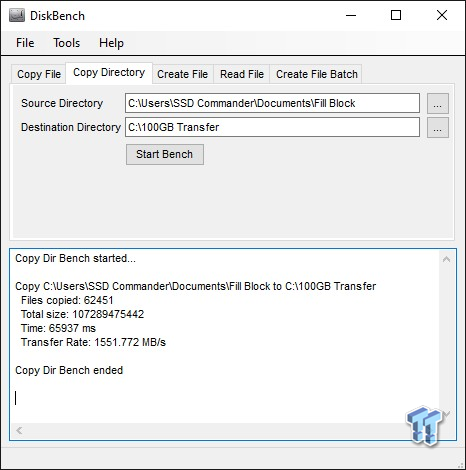
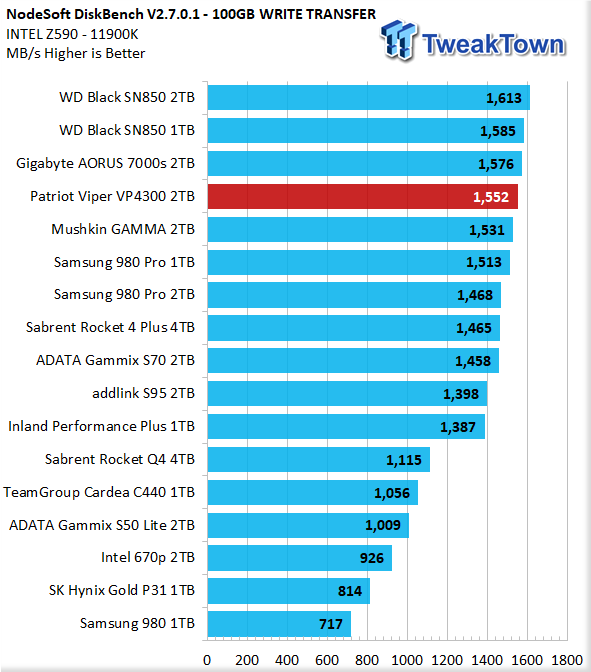
The 2TB VP4300 delivers the fourth-best result we've received to date on our Intel test bench. Again, and like we've seen so far, the VP4300 with its newer firmware seems to deliver slightly better numbers than the S70.
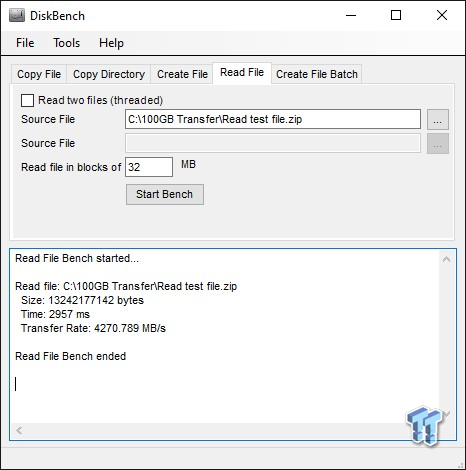
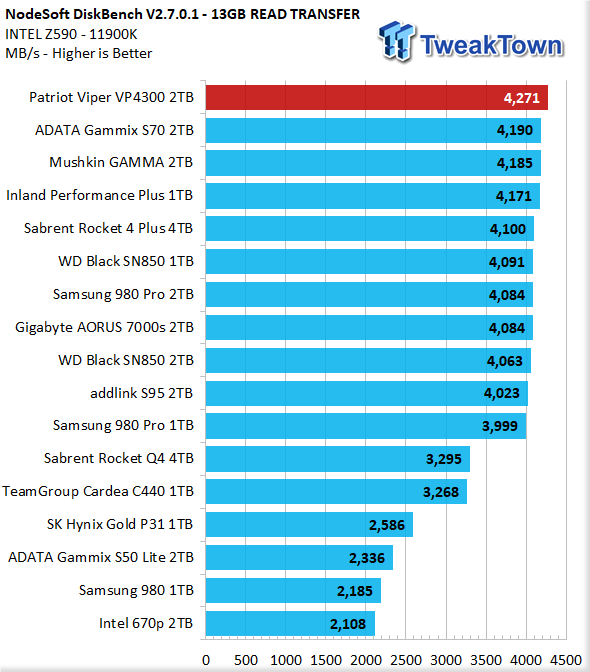
Hey, look at that; the 2TB VP4300 sets another lab record for Intel. Impressive.
Game Level Loading
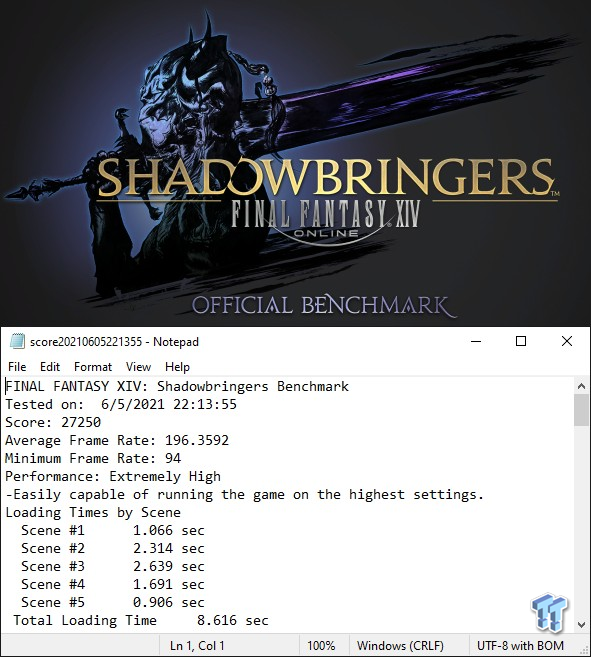
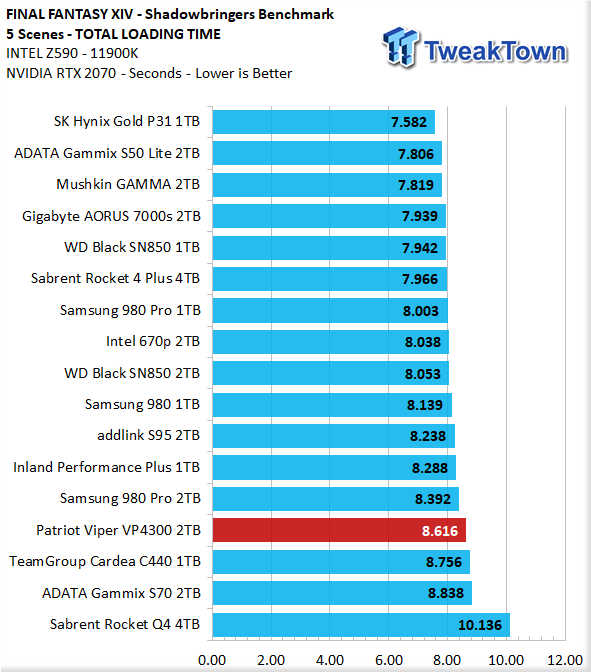
Gaming performance charts lower than average. However, 8.6 seconds is well within the range where we consider it to still be a great choice for gaming. Again, slightly better than the similarly configured S70.
Real-World Testing: PCMark 10 Storage Tests
PCMark 10 Storage Test is the most advanced and most accurate real-world consumer storage test ever made. There are four different tests you can choose from; we run two of them.
The Full System Drive Benchmark and the Quick System Drive Benchmark. The Full System Drive Benchmark writes 204 GB of data over the duration of the test. The Quick System Drive Benchmark writes 23 GB of data over the duration of the test. These tests directly correlate with user experience. Of the two tests, we feel that the Quick System Drive Test most accurately replicates a typical user experience.
PCMark 10 Full System Drive Benchmark
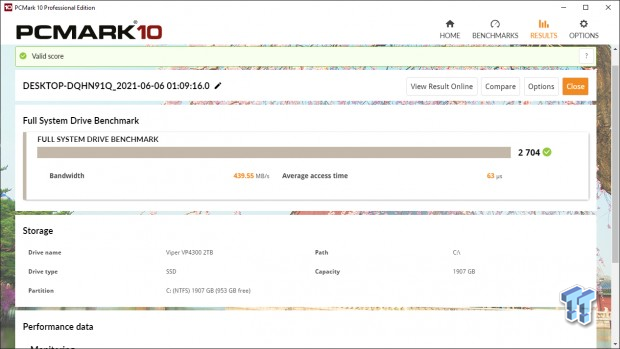
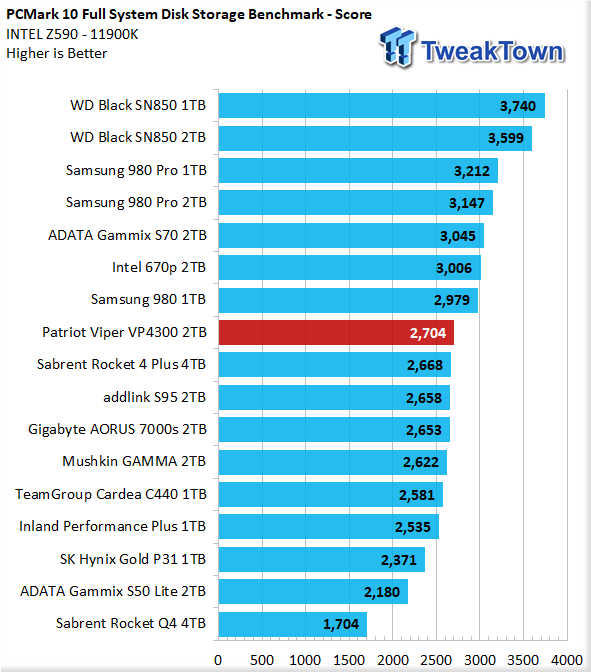
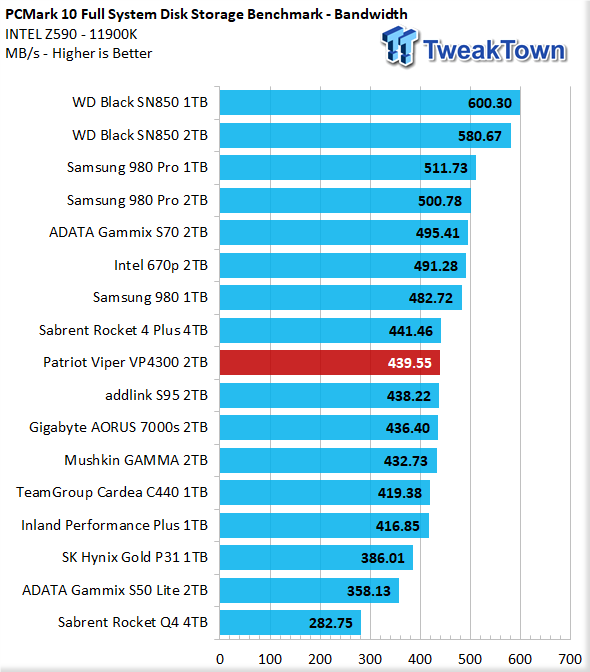
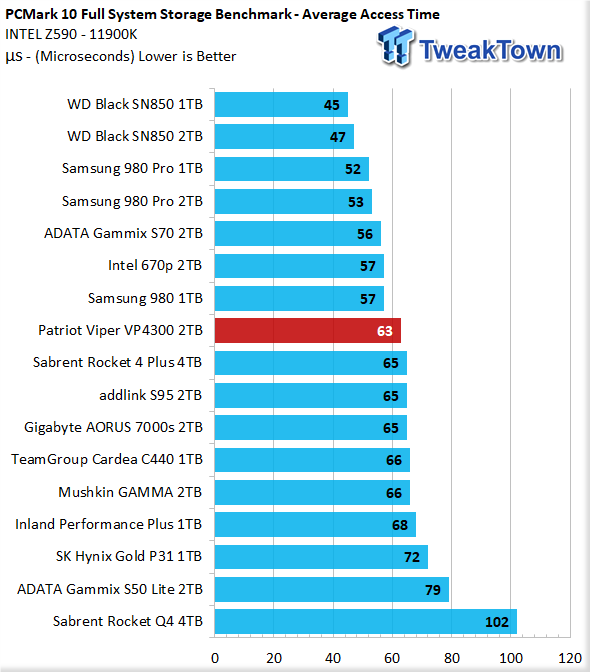
This particular test writes over 204GB data and covers a broad range of common consumer tasks, including booting Windows 10, file transfers, Adobe and Office applications, and startup times for games including Battlefield V, COD Black Ops 4, and Overwatch. Unlike synthetic numbers, this is comprehensive real-world data which is why we use it to rank SSDs in terms of user experience.
Okay, now we see what we consider a side effect of less heat. The VP4300 scores significantly lower than the S70. Overall, it's still pretty good, but a bit lower than expected.
PCMark 10 Quick System Drive Benchmark
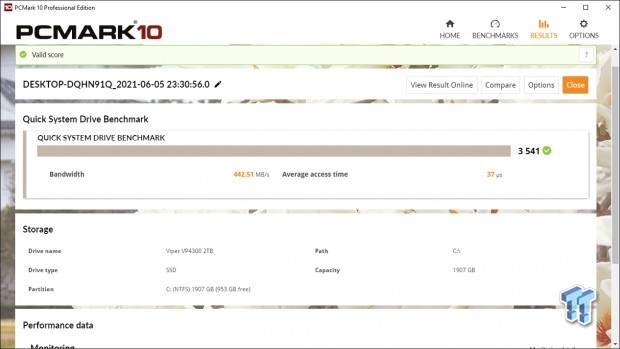
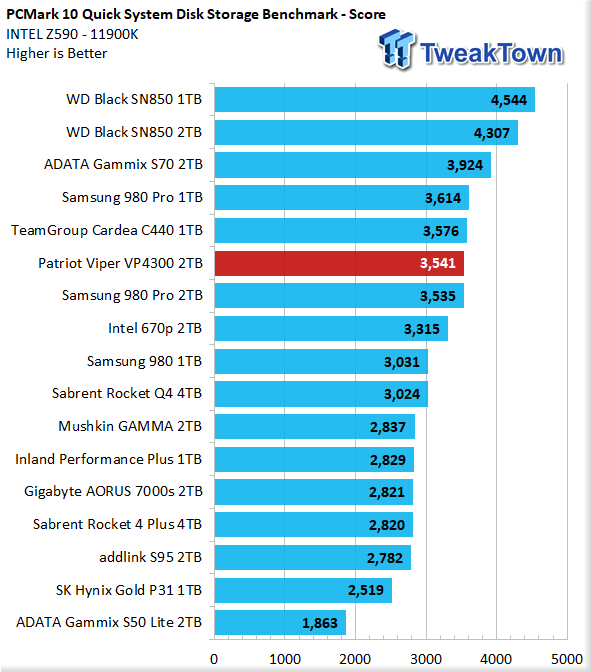
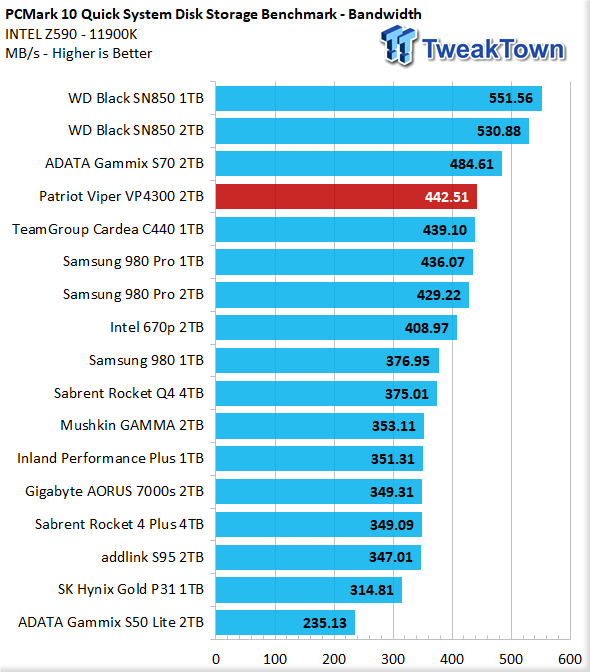
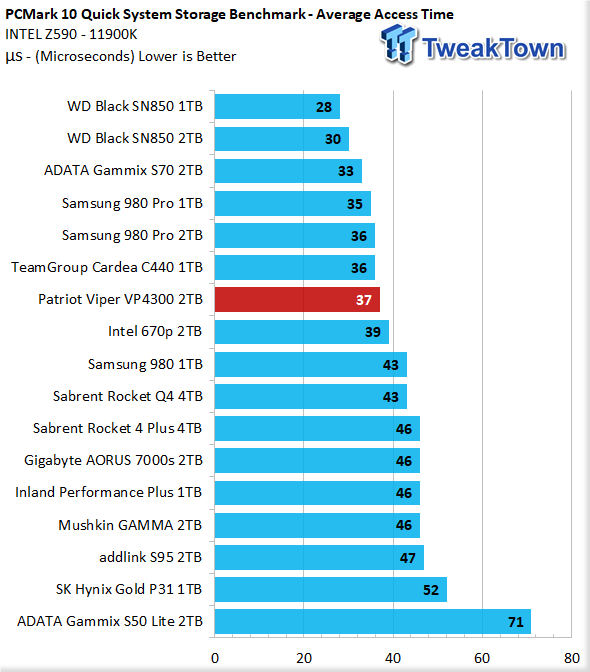
Same thing here as it relates to the S70. Although here, the 2TB VP4300 is beating some of the SSDs that were ahead of it on our Full System Disk chart.
Final Thoughts
We are liking what InnoGrit is bringing to the table. Especially now that heat appears to no longer be much, if any, issue with the IG5326 controller that powers Patriot's newest flagship performance SSD. Overall, we would have to say the 2TB Patriot Viper VP4300 is a worthy addition to the small list of SSDs we consider to be "Hyper-Class" performers. Additionally, we really like the thermal options that Patriot offers when you purchase a VP4300. Naked, thermal label, heat sink, or both thermal label and heat sink are the kind of options we like to choose for ourselves but did not get to do until now. Thanks Patriot.
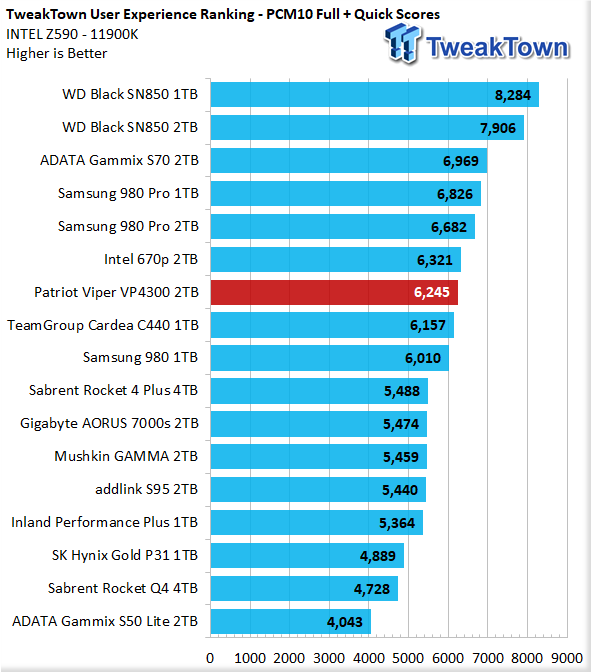
We rank SSDs in terms of overall user experience (performance where it matters most) as expressed by PCMark 10 storage tests. With a score exceeding 6K, you can be confident that the 2TB VP4300 is capable of delivering a Tier-1 user experience.

Looking back at our results, we note several standout performances worth mentioning here. Our very first benchmark produced a new lab record for sequential read speed on an Intel-based system. The 2TB VP4300 once again demonstrated its prowess with all things read-oriented by dishing out another lab record for Intel-based DiskBench read transfer testing. Finally, with an overall user experience score exceeding 6K the 2TB Patriot Viper VP4300 proved it can deliver a user experience that is among the best there is.
Patriot's newest flagship SSD has earned a TweakTown recommendation and one of our highest awards.
Pros
- Sequential Speeds
- Gaming
- Thermal Options
Cons
- Random Performance above QD4

Performance |
90% |
Quality |
95% |
Features |
90% |
Value |
90% |
Overall |
91% |
Tier-1 performance and thermal options make the Viper VP4300 something special.

What's in Jon's PC?
- CPU: AMD Ryzen 7800X 3D
- MOTHERBOARD: GIGABYTE AORUS Master X670E
- RAM: Kingston Fury Renegade 7200MHz 32GB
- GPU: ZOTAC AMP Extreme GeForce RTX 4090
- SSD: Crucial T700 2TB Gen5
- OS: Windows 11 Pro
- COOLER: Lian Li Galahad 360 AIO
- CASE: Lian Li Lancool III
- KEYBOARD: Corsair K65 RGB Mini
- MOUSE: SteelSeries AEROX 5 Wireless
- MONITOR: ASUS ROG Strix PG27AQN 360Hz 1440p ULMB2
Similar Content
Related Tags

